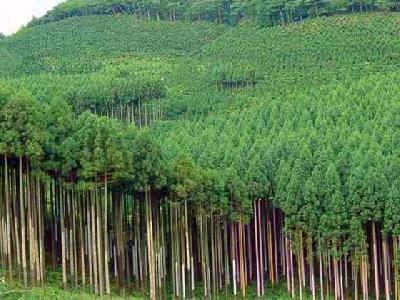|
The kitayama tree is one of the most common sources of timber used in making Japanese 'sukiya' houses. It is a representative Japanese cedar, and is forested in Nakagawa district, Rakuhoku, Kyoto.
Wood from the kitayama tree is characterised by its brilliant, smooth surface. Besides its color, the wood will not discolor nor warp. This is why it is beloved by architects, tea masters and intellectuals.
The first kitayama plantations were cultivated in the Muromachi period, 600 years ago, and began to be used increasingly in the tea ceremony.
The foresters put great efforts into keeping the cedar undamaged. All the production processes, from choice of saplings, to cultivation, pruning, trimming and grass-cutting, are done manually with great care and precision. Thanks to the endeavors of its pioneers, the kiyatama lumber industry continues to flourish to this day.
Wood from the kitayama tree is characterised by its brilliant, smooth surface. Besides its color, the wood will not discolor nor warp. This is why it is beloved by architects, tea masters and intellectuals.
The first kitayama plantations were cultivated in the Muromachi period, 600 years ago, and began to be used increasingly in the tea ceremony.
The foresters put great efforts into keeping the cedar undamaged. All the production processes, from choice of saplings, to cultivation, pruning, trimming and grass-cutting, are done manually with great care and precision. Thanks to the endeavors of its pioneers, the kiyatama lumber industry continues to flourish to this day.
| [+ADDRESS] | 
|













